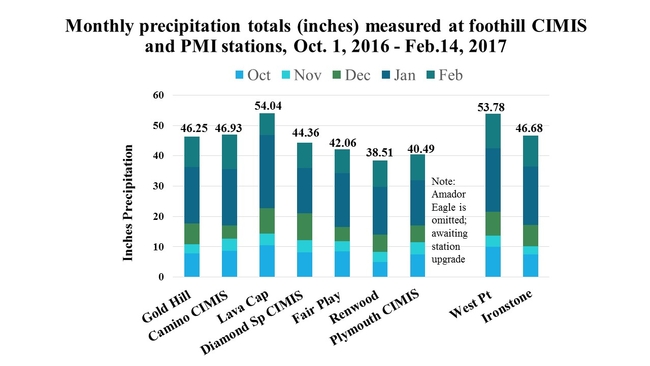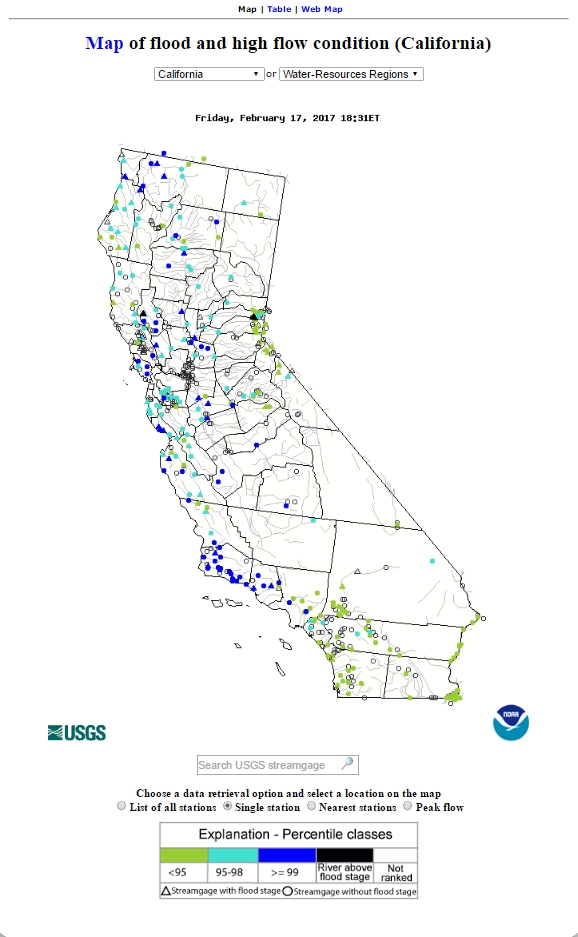- Author: Lynn Wunderlich
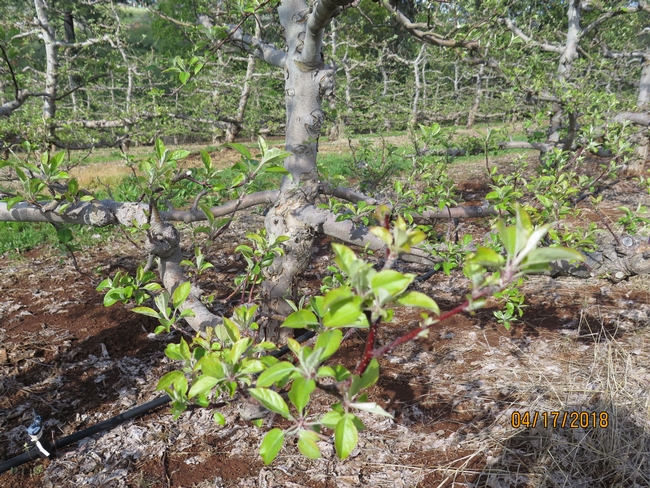
Remember those 70°F days in early February? While you may have been basking in the California winter weather while your relatives back in the Midwest were freezing (sorry sisters!), our apple, pear, peach and nectarine trees weren't so happy. That is because pome and stone fruits need a certain amount of chilling during the winter to release them from dormancy. 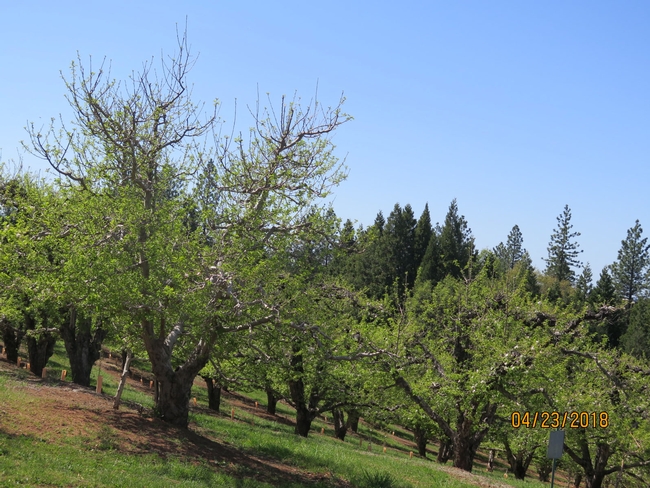
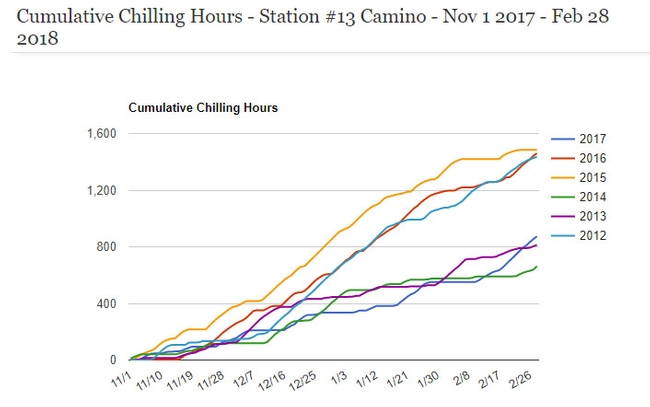
Chilling has historically been calculated by summing the hours below 45°F or the hours between 32°-45°F from November 1 through the end of February.
When we look at the Camino CIMIS station's cumulative chilling hours below 45°F for 2017-2018, we can see that we reached only 855 chill hours during this time. Chilling requirements for pome and stone fruits depend on the variety, but most apple varieties that are not "low-chill" will require between 500-1000 chilling hours below 45°F, while most grapes will need less than 200 chill hours.
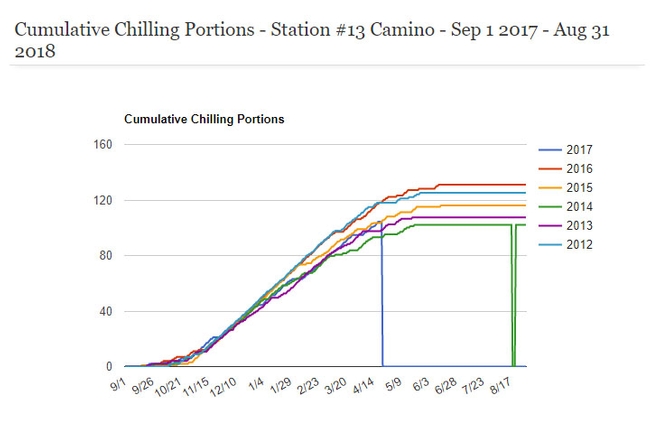
While February was unseasonably warm, late March and April has had some nights where temperatures have reached as low as 30-31°F. Once plants break bud, all of their tissue is susceptible to frost damage. Cold injury to grape green 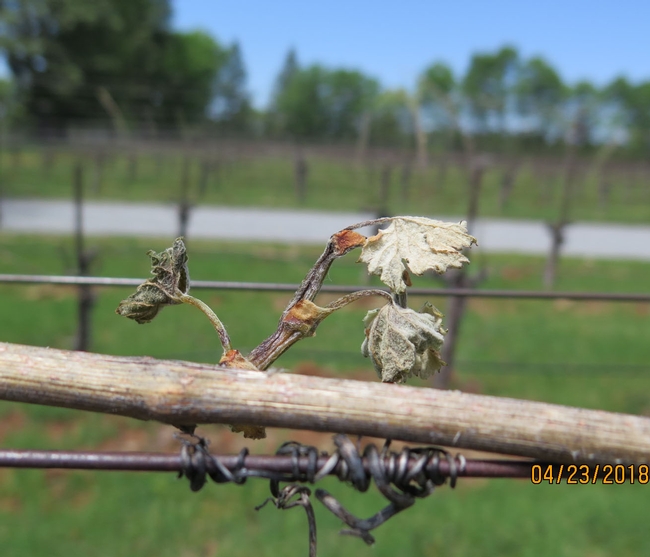
Frost damage actually occurs because of dehydration of the plant cells. The cells are injured when their contents freeze and expand. Later, the damaged cells can no longer control their liquid contents, so they dehydrate.
The degree of frost damage depends on a number of factors: how cold the tissue got (depending on your site microclimate, slope, aspect, etc.); whether there is bare ground, which will absorb and hold daytime heat, or a ground cover or cover crop, which can not hold daytime heat and may even harbor ice nucleating bacteria that allow freezing to occur at slightly higher temperatures. The carbohydrate reserve that a vine has is also an important factor for susceptibility to frost injury. A low carbohydrate reserve, due to a super vigorous variety or one which stays growing late into the fall, or those that suffer from water stress (which is why it is advised to water post-harvest if you can), can make a vine more susceptible to frost injury.
Recently I observed variable frost damage in Viognier, Nebbiolo, Syrah and Gamay grape varieties growing in El Dorado County. It is still a bit early to determine how much damage (damage to emerging clusters) was done. Thankfully, basal buds and a "second crop" may come to the rescue! Erratic, intensive weather patterns, whether they be cold or warm, appear to becoming more common. Learning how to farm profitably during these uncertain times is but one of the challenges we face for our farming future.
- Author: Lynn Wunderlich
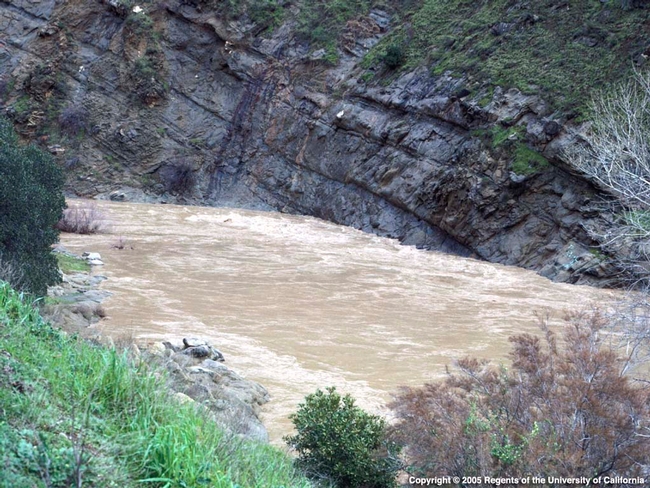
The "hydrological year", also called a "water year", is a term hydrologists and water resource managers use to describe the period from Oct. 1 of a given year to Sept.30 of the following year. Thus, the hydro year is meant to include fall rainfall with dormant season rains that may impact the soil water holding capacity and total rainfall for crops emerging the following spring.
The stations are located across El Dorado, Amador, and Calaveras counties and give us a good picture of the rainfall totals across the region. And the winner is....the Lava Cap station located in Camino has recorded the highest rainfall amount to date, 54.04 inches; closely followed by our newest addition to the network, the West Point station at 53.78 inches!
- Author: Lynn Wunderlich
A few of you growers out there have told me in the past "Lynn, if you want it to rain, hold a field meeting!"
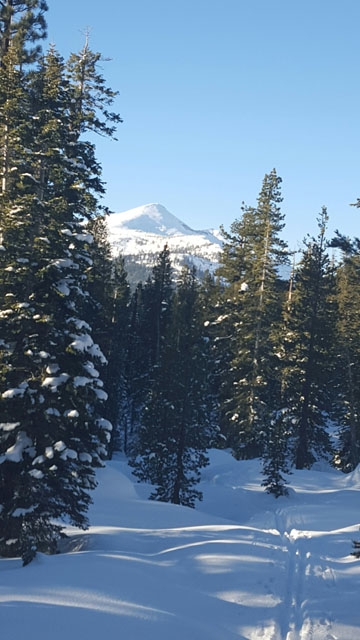
So it is in this spirit that my very first blog post forecast a warm winter right before the major snow dump in the Sierra over the holidays! Indeed the Department of Water Resource's (DWR) California Data Exchange Center (CDEC), my go-to site for up to the minute hydrological information, shows the latest snow data for the American River Basin range sites at 52 to 67 inches of snow! This includes the snow stations at upper and lower Carson Pass, Aloha and Echo lakes, and Tamarack flat. The snow currently has an 18-30% water content and is at 31-60% (depending on the location) of April 1 historic records. According to the CDEC, the April 1 historic average is based on measurements from 1951-2000.
A little closer to home, all of that snow in the Sierra amounted to a good drenching of rain to ring in the New Year. The following stations recorded December rainfall amounts:
Camino CIMIS: 7.41in.
Diamond Springs CIMIS: 6.99 in.
Plymouth CIMIS: 6.49 in.
And our PMI stations recorded December rainfall totals:
Lava Cap PMI: 9.56 in.
Fairplay PMI: 5.8 in.
Amador Eagle: 6.16 in.
Amador Renwood: 5.47 in.
Calaveras Ironstone: 10.17 in. (Wow! this one surprised me, as Calaveras often has lower precip. than further North).
A very good start to the new year. Let's hope the cold weather sticks around.


